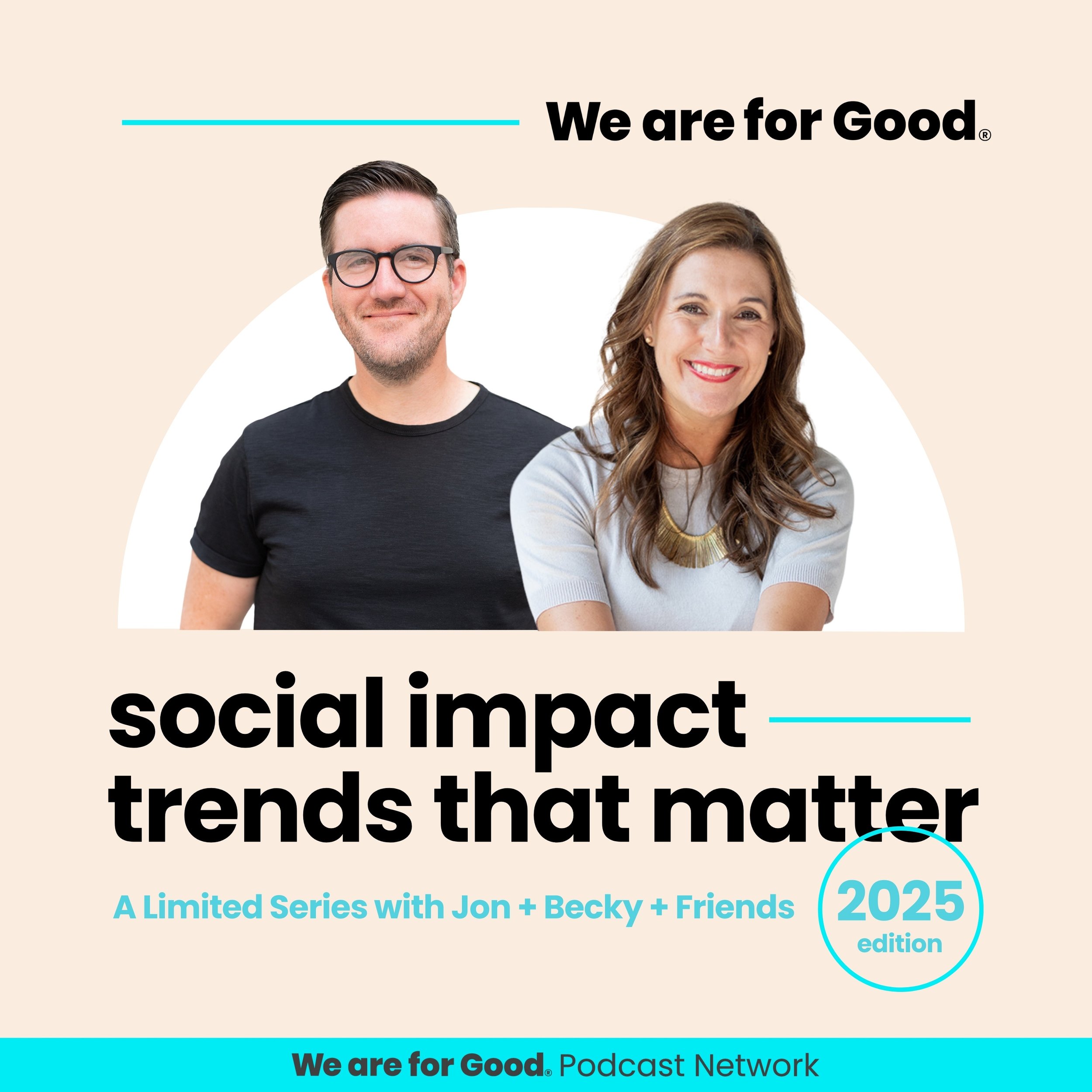
5 Tips for Planning an In-Person Fundraising Event in 2023
5 Tips for Planning an In-Person Fundraising Event in 2023
After several years of focusing heavily on virtual engagement, your nonprofit’s event planning skills might understandably be a bit rusty. A diverse calendar of campaigns, events, and engagement opportunities goes a long way to keep your supporters connected to your organization, and in-person events definitely have a role to play.
Many donors prefer in-person events because they are more intimate and tend to be more engaging. The OneCause Giving Experience Study revealed a few interesting trends about in-person engagement:
74% of donors reported their last giving experience took place at an in-person event, up from 49% in 2021.
85% of donors in 2022 reported being very or somewhat comfortable attending in-person fundraising events.
38% of donors reported preferring engaging with nonprofits only or mostly in-person, with another 23% preferring an even mix of in-person and virtual engagement.
Donors are clearly ready to head back to the ballroom (or 5K course, auditorium, community center, or wherever else you might host an event). Getting them excited to engage before and during your events will be more important than ever as a tumultuous economy raises the competition for their attention and generous gifts.
So how do you ensure that your next in-person fundraiser runs smoothly and makes everyone feel connected to the mission? What pandemic lessons should we carry forward as standard parts of a nonprofit event strategy? To knock your event out of the park, you should:
Carefully consider your event type and format.
Be flexible and communicate with supporters.
Streamline the attendee journey from start to finish.
Incorporate hybrid options and activities.
Use tools that deliver long-term value.
Let’s take a closer look at each of these tips and how they can apply to your nonprofit’s next event.
1. Carefully consider your event type and format.
Before you can start planning an engaging event, you’ll need to know what you’re planning in the first place. The type of event is just that—a gala, 5K, community potluck, holiday festival, etc. In most cases, you already have a clear idea of what type of event you want to host, but it’s always worth giving it some careful thought at the outset.
This is because your events need to be targeted in order to have an impact. If the goal for your in-person event is to raise money, you can and should shape your plans based on a few things, including:
Revenue and engagement goals for the event
Target audience
Giving trends, like average donation amount
Past event attendance
Interests and motivations
Let’s say your goal is to raise money and engage your higher-impact donors in-person. These donors have attended your past galas and give an average amount that would make a larger event worthwhile—in this case, a gala and auction would be a good choice. Or, let’s say you’re a school PTA leader looking to raise some money and entertain your community’s families. Your target audience has responded well to casual evening events in the past and has been willing to donate small entry fees and pay for concessions—a community game night would be an effective event to plan.
In both of these examples, the plans are tailored to the organization’s goals and the events’ target audiences, making success much more likely.
Today, a fundraising event can also take one of three formats:
In-person
Virtual
Hybrid
Virtual-only events are still a viable route for many types of events and are a great way to fill out your calendar to engage supporters, but here we’ll focus on in-person and hybrid events. The main takeaway is that event format is a new consideration that needs thought in the early planning stages alongside the exact type of event you’ll host.
These considerations underscore the importance of keeping records on donor engagement, donations, and event performance in order to learn more about what events best engage different segments of your audience—a CRM that automatically tracks this data is invaluable. But even a less exhaustive form of record-keeping can help. Look back at results from previous events, find the type of event you want to host or your most successful events, and correlate their results to the audiences they targeted and the specific strategies you used.
And don’t forget that you can always simply ask your donors what kinds of events they’d be excited to attend—a quick survey is easy to send, and it shows them you value their input!
2. Be flexible and communicate with supporters.
Nonprofits of all sizes learned the importance of flexibility and keeping open lines of communication as the pandemic threw us endless curveballs. Pivoted or canceled events, the challenges of getting up and running with virtual events, the technical complexities of explaining a brand new event process to attendees—there have been plenty of lessons to carry forward.
Even now that the majority of donors are happy to attend in-person events (and virtual events have become more of a strategic choice than outright necessity), you’ll still benefit from building flexibility and communication into your plans from the start. Consider these tips:
Make it easy to pivot format if needed. You never know when you may need to quickly change plans, and pivoting your in-person event to take place virtually is much better than canceling it altogether. If you’ve hosted virtual and/or hybrid events in the past, make sure your software is up-to-date and ready to be used if needed.
Share frequent updates with supporters. Promoting your event has always been essential, but the past several years have taught us the importance of communicating logistics, too. Remind registrants about your upcoming event, share details about the venue, transportation, parking, and food—whatever information they need to plan ahead and keep your event top-of-mind.
Share clear hybrid explanations and instructions, if applicable. Hybrid events can be more complex to manage than purely in-person events, so don’t forget to clearly explain supporters’ options, what the different experiences will entail, and how to join remotely.
Provide other custom options when possible. Everyone appreciates a more customized experience. Depending on the type of event you’re hosting, this might mean offering tiered ticket packages or add-ons. It could even be as simple as asking if registrants prefer to receive updates via email or text. By showing that you value their engagement in this way, you can make a lasting impression.
Even though these kinds of steps require a bit of extra planning, they’ll go a long way to provide attendees with more positive experiences—meaning stronger fundraising results and donor relationships over time.
3. Streamline the attendee journey from start to finish.
The challenges of 2020 and 2021 have also taught nonprofits the value of streamlining donor-facing tasks. Consider the steps you may have taken to incorporate more contactless processes in past events—revamped online registration tools, easy self-check-in via QR codes, and mobile bidding software to reduce contact on paddles and bid sheets.
These are all great examples of ways you can streamline different aspects of the attendee journey or experience at your events. When planning a new in-person event, think about your attendee journey from start to finish, including how they’ll:
Learn about the event
Register to attend, if applicable
Arrive at the event
Engage with the event
Give donations or make payments
Leave the event
Think about the event once they leave
Once your event plans are in place, try journey mapping. Lay out each of the steps listed above, adding or adjusting as needed, and consider what you’re asking attendees to do in each stage. Are you providing them with the tools or guidance they need to experience a hassle-free event?
You might find a number of things worth updating or redesigning, like various parts of your marketing, registration, check-in/out, and donation processes. Or you may decide to revisit your program schedule to break up long speaker segments in a more engaging way.
This step is useful for large-scale events in which generating a strong ROI is especially important, but it’s a valuable and adaptable exercise for any event you might host. Use it to audit your attendee experience and make a to-do list of tech upgrades and programming improvements to try out down the line.
After all, your supporters are busy—taking the time to provide a streamlined, enjoyable experience will not only show respect for their time but also make it easier to focus on your mission, not the logistics of checking in or writing a check.
4. Incorporate hybrid options and activities.
Hybrid formats (dual virtual/in-person experiences) are quickly becoming a standard option for all types of nonprofit events because they bring a few key benefits:
They open up your event to larger audiences, including those who don’t want to join in-person or who live far away.
They create opportunities to engage different audiences with a single event in ways that might not have been feasible before.
They give you a tech infrastructure to easily launch or pivot new virtual events in the future.
Hybrid options bring your nonprofit a ton of event planning flexibility, and in many cases opening up your in-person events to remote attendees can be a wise choice. For example, many organizations are now hosting hybrid annual galas that offer dual experiences:
In-person, VIP experiences for high-impact donors. This entails the traditional ballroom, entertainment, dinner, and live or silent auction experience.
Virtual experiences open for all supporters to attend. A virtual gala can incorporate a diverse range of livestreamed speakers from the ballroom, prerecorded content, chatrooms, and real-time bidding via mobile bidding software.
This approach allows nonprofits to more effectively tailor both sides of the event, perhaps by scaling down the venue for a smaller in-person audience or curating separate auction catalogs to appeal to audiences of different giving levels. Most importantly, it creates the opportunity to bring everyone together to celebrate your mission.
Although hybrid events have many benefits, they also can have more logistical considerations. Essentially, you’ll be planning two overlapping but different event experiences which need to be concretely connected. Determine your event’s format early so that you’ll have plenty of time to plan. Pay extra attention to your event program to ensure you’re engaging both audiences in relevant ways. The OneCause guide to hybrid event planning covers these tips and more to help you get started if a hybrid event sounds like the right move for your nonprofit.
5. Use tools that deliver long-term value.
Tech is more central than ever to the event planning and management processes, so you should take the time to consider whether your current event tech stack is creating fundraising effectiveness or nightmares for your cause. A nonprofit’s event software should include capabilities like:
Registration and seating capabilities
Ticketing software
Integrated payment processing
Flexible and built-in event options (virtual, in-person, hybrid)
Live and silent auction planning
Robust real-time reporting and analytics
Sponsorship functionality
Donation tools
There are all kinds of options on the market to cover these capabilities and more but remember that you’ll ultimately derive more value from your tech when it’s:
Integrated. When your event tools integrate with your database and can freely share data back and forth, you’ll reduce the need for complex contact or donation exports and imports. Integrations also make it easy to automatically track attendee engagement so that you can learn more about how your different donors prefer to interact with your events—meaning you can plan more targeted events that yield higher ROIs in the future.
Part of a larger suite. Standalone tools can definitely work well, especially when they integrate with your database, but a full suite of fundraising software is often a better choice in terms of efficiency, support, and growth potential. A platform that offers everything you need, including features for in-person, virtual, and hybrid events, can grow along with you over time.
Even if a tech overhaul isn’t in the cards for the coming year, take some time to review your current fundraising software and the areas where it’s working well and falling short. Events are most effective when they’re part of an overarching strategy, and your technology should actively support that strategy—if it’s costing you more time or money to use a tool than what it generates over the course of your event calendar, it could likely stand an upgrade.
In-person nonprofit events are back in full swing, and many donors are excited to get back to engaging with and supporting the missions they love in fun environments. By following the tips above, you can plan your most effective event yet and lay a solid groundwork for future events. Best of luck, and happy fundraising!

Sarah Sebastian, Director of Corporate Communications at OneCause
Sarah Sebastian, Director of Corporate Communications at OneCause
Sarah Sebastian is the Director of Corporate Communications at OneCause. She’s a marketer and brand geek at heart with eight years of experience in the nonprofit tech space. Outside of work, Sarah can be found reading, hiking, kayaking, volunteering for Florida Access Network, or getting lost in the woods while photographing birds.

Sarah Sebastian, Director of Corporate Communications at OneCause







